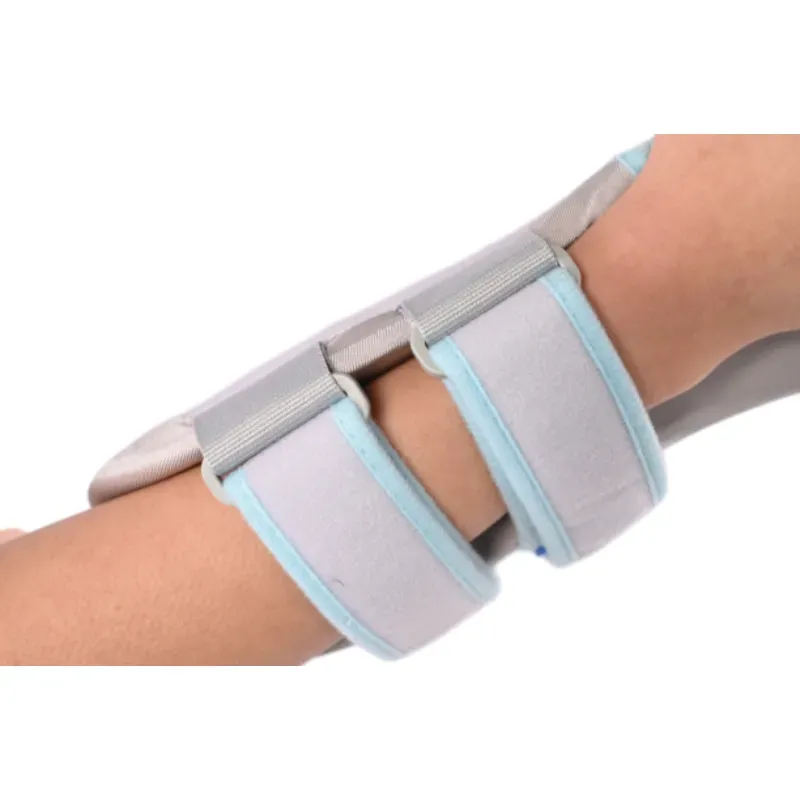How Hand Splints Improve Daily Function for Patients
Hand splints are integral to the rehabilitation process, especially for patients recovering from wrist injuries or surgeries. Whether it’s a left wrist splint, a medical wrist splint, or a palmar wrist splint, these devices play an essential role in allowing individuals to perform daily tasks and activities while promoting healing. By providing support and stability to the wrist and hand, these splints ensure that the patients can continue their routines with minimal disruption during the recovery period.
Left Wrist Splint: Enhancing Mobility for Everyday Tasks
A left wrist splint is specifically designed to support the left wrist in cases of injury, surgery, or chronic conditions like carpal tunnel syndrome. When used appropriately, the left wrist splint helps prevent excessive movement that could hinder the healing process while still allowing the user to perform essential tasks. Patients can engage in activities such as typing, cooking, or even writing with modified motion to avoid strain. The splint offers a secure fit, ensuring that the wrist stays stable but still functional for basic actions. This balance of protection and mobility is crucial for those who need to maintain an active lifestyle while healing.
Medical Wrist Splint: Supporting Recovery While Preserving Function
A medical wrist splint is often used in the recovery phase after surgery or injury. It’s designed to provide maximum support while preserving as much functionality as possible. The medical wrist splint helps patients perform day-to-day activities, such as holding objects or using utensils, with less discomfort. For those dealing with tendon injuries, sprains, or fractures, the splint reduces the risk of re-injury by restricting excessive motion, yet it doesn’t restrict essential movement. This allows patients to continue living their lives without major interruption, helping them manage their conditions effectively during the healing process.
Palmar Wrist Splint: Improving Grip and Dexterity
Le palmar wrist splint is a great choice for individuals looking to regain some hand function during recovery. Unlike more rigid splints, the palmar wrist splint provides support to the palm and wrist while allowing for a natural grip. This unique design enables patients to engage in tasks that require dexterity, such as holding a cup, opening doors, or operating small devices, with ease. By limiting motion in the wrist joint while supporting the palmar region, this splint makes it possible to perform light chores or work activities with greater comfort. The palmar wrist splint serves as a great rehabilitation tool, offering both functionality and protection as healing progresses.
Pink Splint: Stylish Support for Wrist Injuries
For patients who seek both functionality and style, the pink splint provides an excellent solution. As effective as standard splints, the pink splint offers the same level of support and stability while adding a touch of color and personality. Many patients, especially those recovering from wrist surgeries or injuries, are looking for a splint that meets both medical needs and aesthetic preferences. The pink splint helps patients feel confident and fashionable while continuing their daily activities, from light household tasks to social engagements. Having a splint that appeals to the patient’s sense of style can also improve overall comfort and adherence to the recovery process.
How Splints Help Perform Tasks With Less Discomfort
Hand splints, whether it’s a left wrist splint, medical wrist splint, palmar wrist splint, or a pink splint, have one common goal: to reduce discomfort and help patients regain the ability to perform daily tasks. By offering protection and support to the wrist and hand, these splints ensure the injured area is not overexerted. Patients can engage in light activities like brushing their teeth, writing, or typing without excessive strain on the healing wrist. Additionally, the medical wrist splint helps in activities that require more stability, such as lifting and gripping. This protection enables patients to regain their normal routines sooner and with less discomfort.
In conclusion, hand splints like the left wrist splint, medical wrist splint, palmar wrist splint, et pink splint not only aid in the recovery process but also allow patients to maintain a functional lifestyle. By providing the right level of support and comfort, these splints help individuals recover while continuing to perform daily activities. Whether it's light tasks or more complex movements, the right splint can make all the difference in the rehabilitation journey, ensuring a smoother and more comfortable recovery process.

-
Wrist Support Solutions for Comfort and RecoveryNouvelles Jul.22,2025
-
The Essential Guide to Arm and Elbow SupportNouvelles Jul.22,2025
-
Posture Correction for a Healthier YouNouvelles Jul.22,2025
-
Effective Wrist Support Solutions for Pain Relief and RecoveryNouvelles Jul.22,2025
-
Effective Arm Sling Support for Shoulder RecoveryNouvelles Jul.22,2025
-
Comprehensive Guide to Elbow and Shoulder SupportNouvelles Jul.22,2025





















